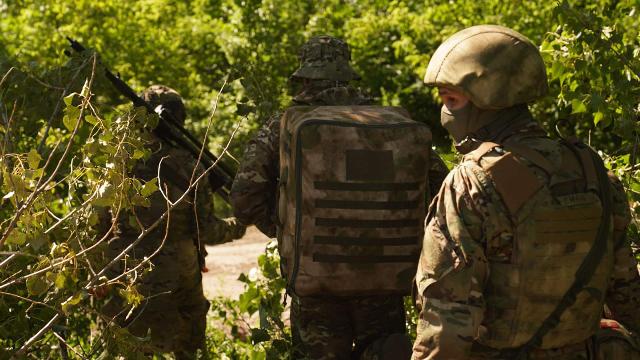About how air sappers work — in a special report by Izvestia
A new method of using drones — to throw mines behind enemy lines — has recently been used in the Russian army. I've been practicing for just over six months. The projectile is delivered to the UAV deep into enemy territory and waits on the ground in its hour. In any combat operation, whether it is an assault or a repulse of an attack, the contribution of miners is invaluable, and it is all the more important to replenish their technical and tactical arsenal. A special correspondent of Izvestia visited the positions of the special mining platoon, which is part of the Karbyshev engineer battalion fighting near Chasov Yar, and found out how many people are needed to send one drone on a mission, what damage it can cause and why a design laboratory is needed in the field.
Along the found paths
We are sitting in the building of a destroyed enterprise, a classic place for "revenge". Here is the headquarters, the barracks, as well as the very laboratory where new, unlike anything, copters are born. The platoon consists of volunteers from the St. Petersburg detachment "Imperial Legion", which took part in the battles in Donbass 9-10 years ago. For the first year and a half, they fought as stormtroopers in the special military operation zone. Since the end of 2023, air mining has been introduced and improved (in parallel with the APU, it should be noted).
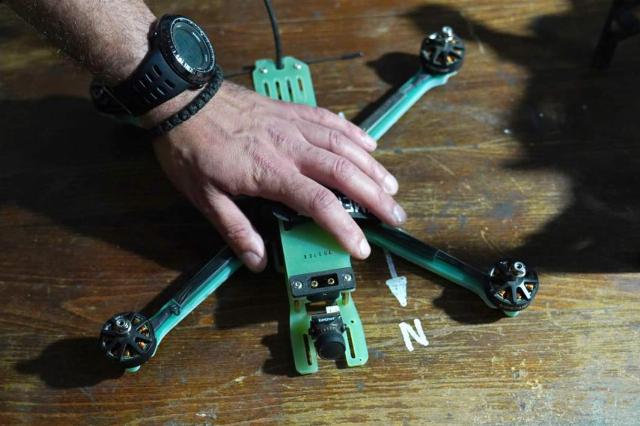
Photo: IZVESTIA/Sergey Prudnikov
Image source: iz.ru
— As you know, there are three types of UAVs, — says platoon commander Denis, call sign Legate. — Attack drones, scouts and the so-called FPV (First Person View, "first person view". — Izvestia), that is, kamikaze. Now a fourth one has been added to them — our "miners", capable of using special mechanisms to bring a projectile into combat readiness in the air and reset it.
Mining drones also belong to the FPV class, the Legate explains, the control is carried out by a remote control in virtual glasses. But it is not necessary to crash into the target and, accordingly, self-destruct. The aircraft delivers the projectile to the desired point, 2-6 km from the demarcation line. And then he returns back to the operator, remaining in the ranks. So, according to Denis, a drone named "St. George" (guys call their screw machines, like ships in the tsarist army, the names of Russian saints) made 34 successful round-trip flights.
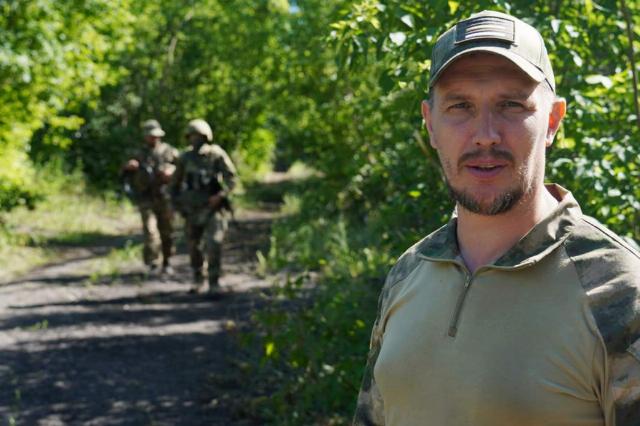
Platoon Commander Legate
Image source: Photo: IZVESTIA/Sergey Prudnikov
The most common projectile for casting is the POM-2 mine (antipersonnel fragmentation). When cocked, four thin 10-meter nylon threads are released from the body, which act as tripwire sensors. The radius of the circular damage of the "pomka" is 16 m.
— The choice of drop points depends on the tasks that intelligence sets for us, — explains the commander. — Most often these are the intersection of roads, entrances and exits from the forest, found trails, paths along which the BC or rotation takes place. Of course, the enemy does not expect that a mine will be laid in a relative distance from the line of contact (LBS), where he always walked and drove calmly, where it was clean a couple of hours ago. And when this happens with regular frequency, first of all, he suffers losses. Secondly, I have to change logistics, travel routes, which requires time and additional effort. And thirdly, he turns out to be morally depressed — he ceases to feel safe.
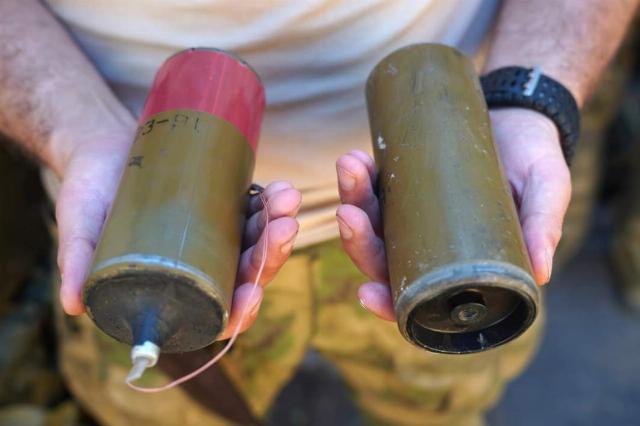
Mine POM-2
Image source: Photo: IZVESTIA/Sergey Prudnikov
Box, Legs, chip
The laboratory is the assembly site for mining drones. All the walls inside are, as expected, hung with tools. The tables are full of wires, duct tape, wire cutters and screwdrivers of all kinds. There is a strong smell of burnt plastic in the air. The situation is working, you can see right from the doorstep. Fans are turned on to save you from the heat.
The senior here is Dragoslav, a Serb, a professional radio electronics engineer. Together with his fellow colleagues, he is responsible for the re-assembly, repair and maintenance of UAVs. The working day is irregular: from dawn until someone reminds you — hang up! The technique can be iterated endlessly.
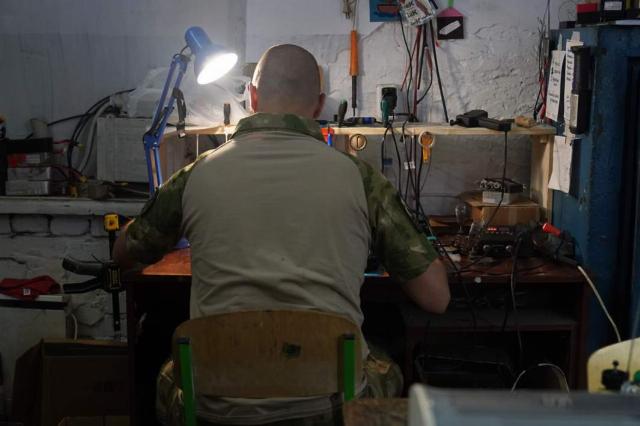
Radio Electronics engineer Dragoslav
Image source: Photo: IZVESTIA/Sergey Prudnikov
— We receive ordinary simple drones, — says Dragoslav. — We are redesigning them, leaving only half of the native components. We install our own software. Each car, in fact, is an act of creativity.
With the help of 3D printers, engineers print mechanisms for dumping mines — plastic boxes that are sewn through with the necessary contacts, attached to the body, where, in fact, the projectile itself is subsequently embedded. Or the "legs" on which the copter must land gently and safely after completing a combat mission in order to immediately be ready for re-departure.
Dragoslav moved to our country ten years ago. He says that his love for Russia was instilled in him by his grandparents, who knew Russian and taught him his grandson from childhood. And they were also brought up in the Orthodox traditions.
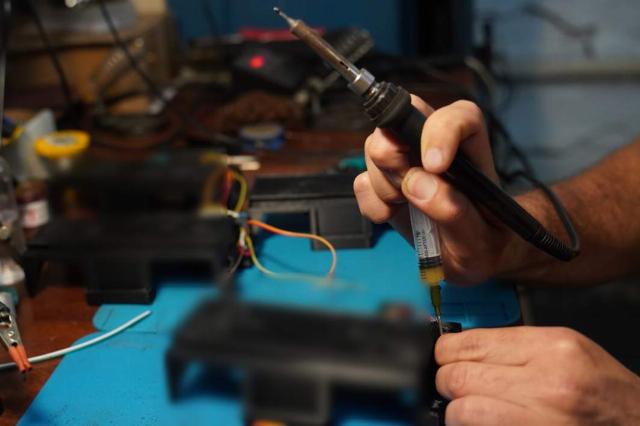
Photo: IZVESTIA/Sergey Prudnikov
Image source: iz.ru
— They said that we should pray for Russia. She came to our aid in difficult times," the volunteer shares. — I've always been drawn to Russia. If I see the domes of churches and hear the bells ringing, I understand that there are people here.
In 1999, Dragoslav, as a schoolboy, caught the NATO bombing. I had to hide in basements for almost three months, hear constant air alarms, and then watch the destruction of my native country. The pain of injustice, when many states attacked Serbia, still remains inside, the interlocutor shares. This was the key reason why he, a successful engineer at a St. Petersburg company, came to Donbass.
Navigator, technician, operator
Gennady, call sign Schmidt, is the commander of the UAV crew. He goes on assignments with a technician and an operator. On the spot, the technician deploys a ground station responsible for signaling and video surveillance: without it, long-distance flight is impossible. He also checks the condition of the device, the nodes, the reset mechanism, and sets a mine. In the shelter at this time, the operator is preparing to operate with FPV goggles, testing the equipment.
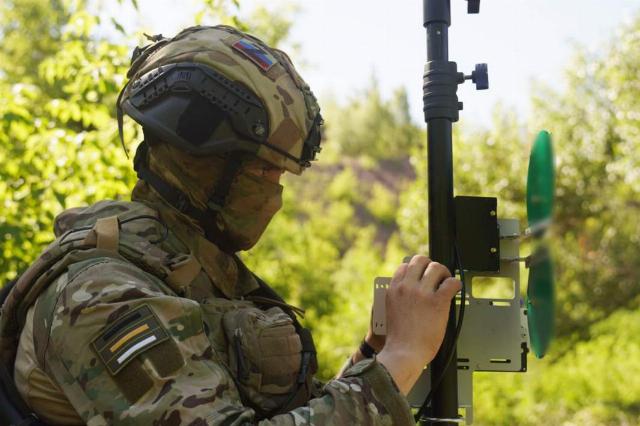
Setting up the control station
Image source: Photo: IZVESTIA/Sergey Prudnikov
At the command of both "ready!" the copter, whistling with screws, rises into the sky and goes on bombing. The commander of the calculation controls the process from A to Z, tracking telemetry, video recording, driving the car along the route, acting as a navigator. After the reset, return, a new charge, and again beyond the line of contact. One flight takes 10-15 minutes. Depending on the task, the platoon tries to make up to 8-10 sorties per day. Over the past two weeks, their number has exceeded 70.
Schmidt himself has been wounded twice in the last two years — in the arm and leg (his left hand is practically not functioning). As part of the "Imperial Legion" he fought at Raisin, Ugledar. I was making my way through Sherwood Forest. Near Bakhmut in 2023, he held the defense in landings. He remembers (not without humor) that in the first year of HIS life there were episodes that are now unthinkable: for example, our people are standing at one end of the village, the enemy is on the other, no one is hiding much, you can even go to the bathhouse. Today, any areas within cannon shot distance are viewed and "shot through" by drones, you just can't go out into the open area and certainly you won't go to the bathhouse in broad daylight without hindrance.
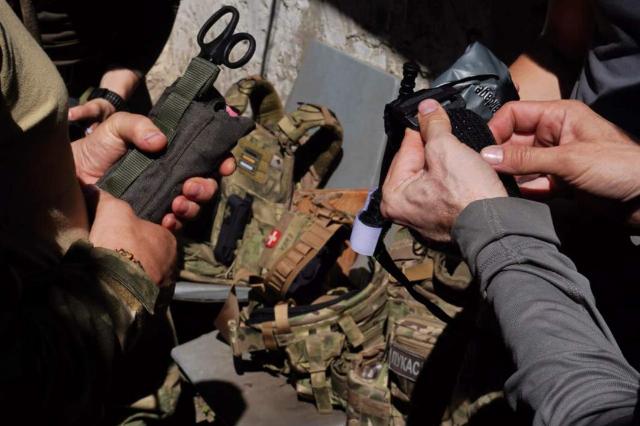
Photo: IZVESTIA/Sergey Prudnikov
Image source: iz.ru
— If we evaluate the military situation, its complexity increases over the years. So, in 2015, when I was near Debaltseve, it was very tense. In 2022, it is already an order of magnitude more difficult. It's even more difficult in 2023, and so on,— explains Schmidt.
In order to cope with the current realities and withstand the increasing pressure, it is necessary, according to both Schmidt, Legate, and Dragoslav, to respond as quickly and flexibly as possible to the challenges of wartime, including technical ones. One such example is remote mining.
Sergey Prudnikov
